外研版(2019)选择性必修 第一册Unit 6 Nurturing nature Understanding ideas课件(共26张PPT 内嵌视频)
文档属性
| 名称 | 外研版(2019)选择性必修 第一册Unit 6 Nurturing nature Understanding ideas课件(共26张PPT 内嵌视频) | 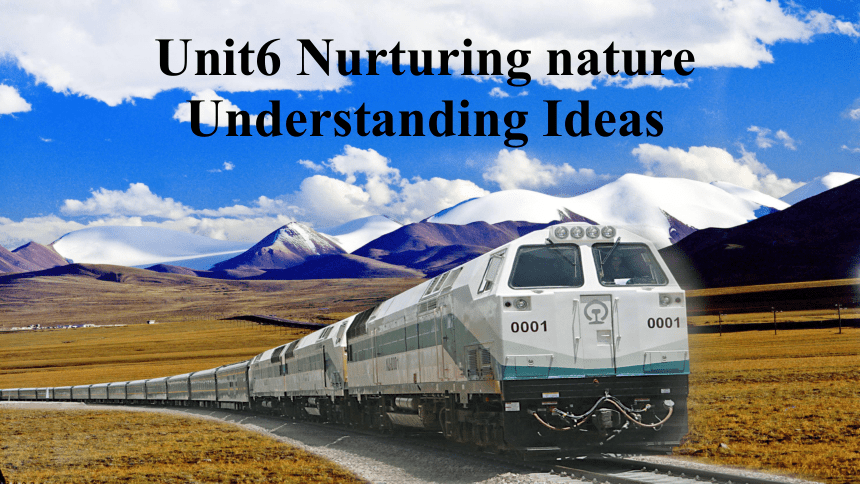 | |
| 格式 | pptx | ||
| 文件大小 | 74.5MB | ||
| 资源类型 | 教案 | ||
| 版本资源 | 外研版(2019) | ||
| 科目 | 英语 | ||
| 更新时间 | 2023-12-07 20:46:22 | ||
图片预览

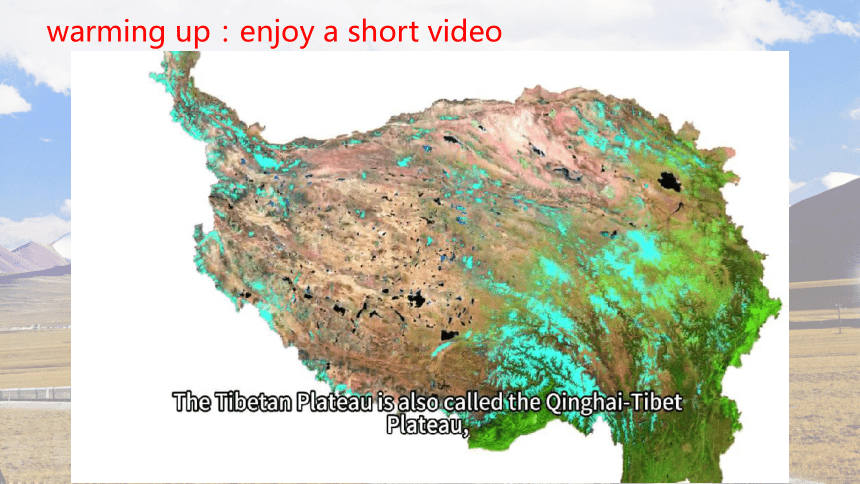
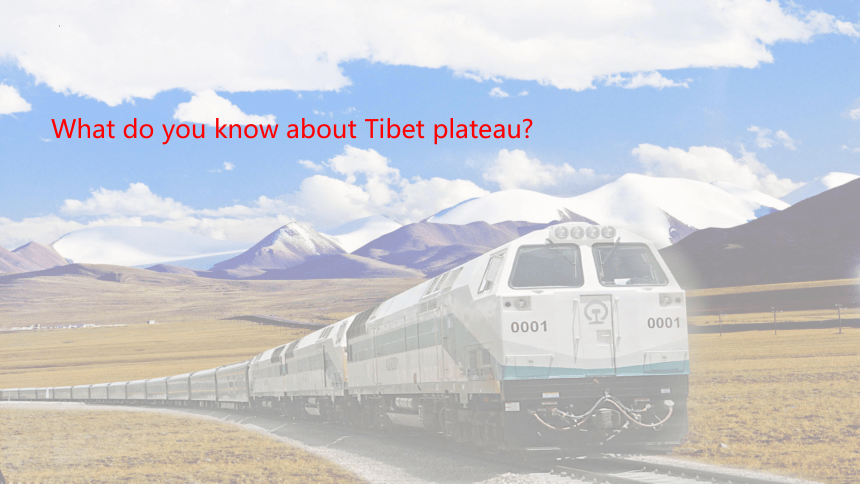
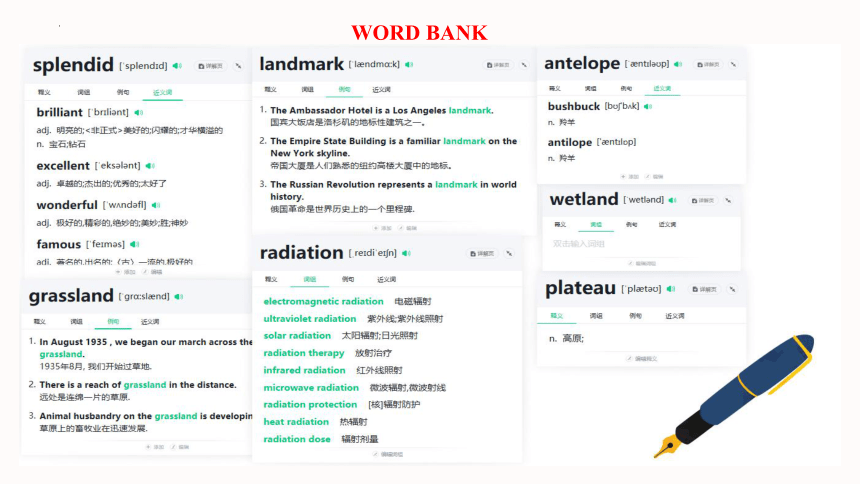
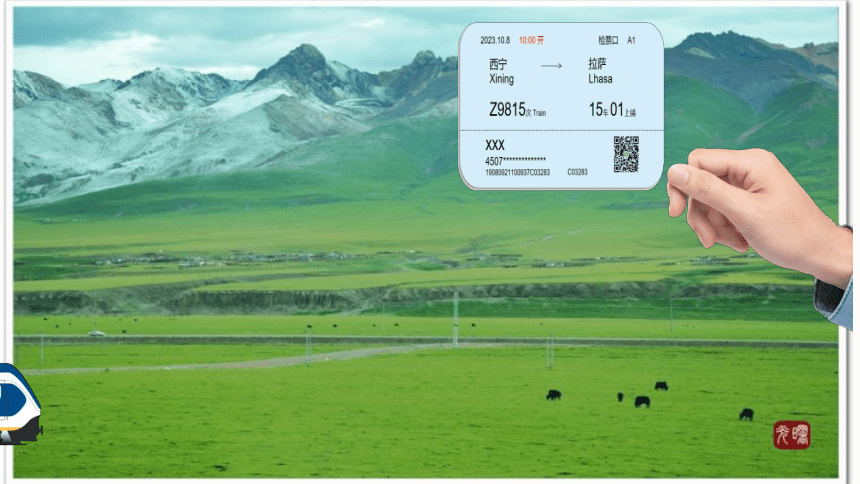
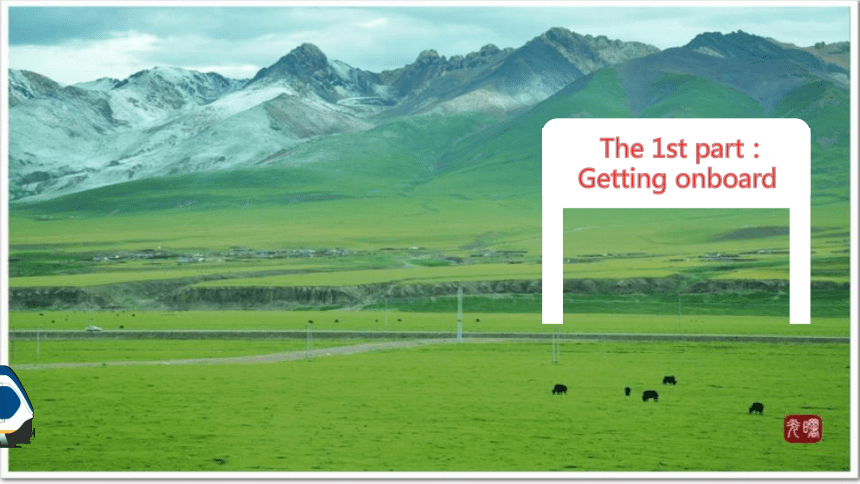
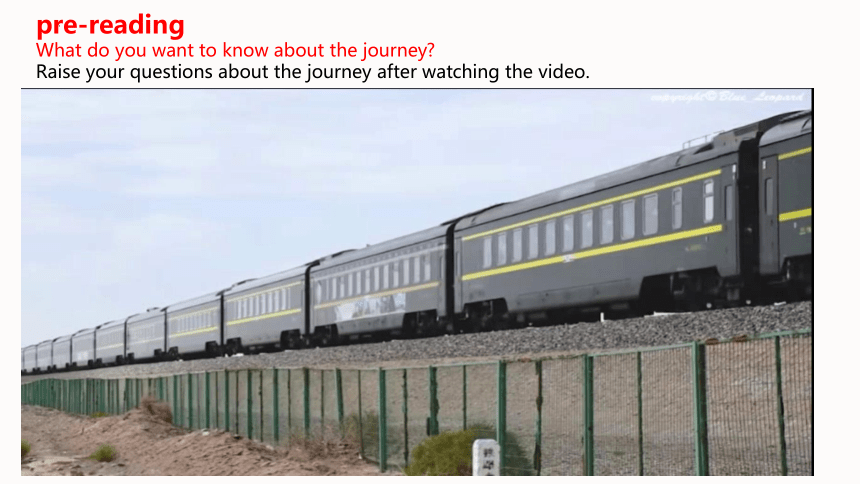

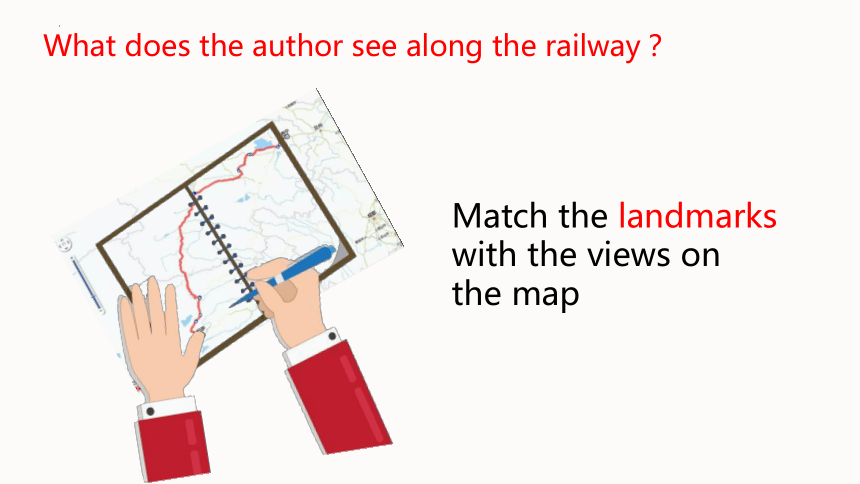
文档简介
(共26张PPT)
Unit6 Nurturing nature
Understanding Ideas
warming up:enjoy a short video
What do you know about Tibet plateau
WORD BANK
The 1st part:
Getting onboard
pre-reading
What do you want to know about the journey
Raise your questions about the journey after watching the video.
Fast reading
Let's read the whole passage to find out the answers to your questions!
What does the author see along the railway?
Match the landmarks with the views on the map
blue mirror-like surface
5,000 metres
Wet lands
antelopes
Qingshuihe Bridge
Tanggula Station
Cuona Lake
Golmud
Why does the author write about the railway
A. To prove that humans can conquer nature.
B. To highlight the amount of work required to build the Qinghai-Tibet Railway.
C. To praise the workers' efforts in building the
Qinghai-Tibet Railway
The 2st part:
splendid scenery
The 2st part:
splendid scenery
Careful reading
Find out the sentences that describe the beauty of the scenery.
The first landmark to catch my eye is the splendid Qingshuihe Bridge, the world's longest bridge built over permafrost.
A group of Tibetan antelopes is moving under the bridge, with some stopping to eat grass at their leisure.
Cuona Lake is so close to the railway that I want to reach out and touch its pale blue mirror-like surface. Water birds playing in the lake, and cattle and sheep wandering the grasslands bring the scenery to life.
The 3rd stop:
Great efforts
Find out the numbers mentioned in the passage.
How did the workers overcome the challenge to protect these beautiful views
“记录了我们克服最困难工程所做的一切努力”
I was one of the people who came from all parts of China to work on this railway. Taking years to complete, the Qinghai-Tibet Railway is a record of all of our efforts to overcome the most difficult engineering challenges. How to protect the delicate ecosystem was among the top concerns.
Work in groups to complete the table
Thirty-three passages
move safely and freely
Wild animals such as these Tibetan antelopes have now been using these passages for years. They seem totally unaware that we are speeding past at over 100 kilometres an hour.
prevent damage to wetlands and grasslands
a total length of about 160 kilometers
moved to
new area
protect Cuona Lake frompollution
Several oxygen-making
stations
regular breaks
build a twenty-kilometer wall
protect it from construction waste
post reading
What can we learn from the construction of the railways
Unit6 Nurturing nature
Understanding Ideas
warming up:enjoy a short video
What do you know about Tibet plateau
WORD BANK
The 1st part:
Getting onboard
pre-reading
What do you want to know about the journey
Raise your questions about the journey after watching the video.
Fast reading
Let's read the whole passage to find out the answers to your questions!
What does the author see along the railway?
Match the landmarks with the views on the map
blue mirror-like surface
5,000 metres
Wet lands
antelopes
Qingshuihe Bridge
Tanggula Station
Cuona Lake
Golmud
Why does the author write about the railway
A. To prove that humans can conquer nature.
B. To highlight the amount of work required to build the Qinghai-Tibet Railway.
C. To praise the workers' efforts in building the
Qinghai-Tibet Railway
The 2st part:
splendid scenery
The 2st part:
splendid scenery
Careful reading
Find out the sentences that describe the beauty of the scenery.
The first landmark to catch my eye is the splendid Qingshuihe Bridge, the world's longest bridge built over permafrost.
A group of Tibetan antelopes is moving under the bridge, with some stopping to eat grass at their leisure.
Cuona Lake is so close to the railway that I want to reach out and touch its pale blue mirror-like surface. Water birds playing in the lake, and cattle and sheep wandering the grasslands bring the scenery to life.
The 3rd stop:
Great efforts
Find out the numbers mentioned in the passage.
How did the workers overcome the challenge to protect these beautiful views
“记录了我们克服最困难工程所做的一切努力”
I was one of the people who came from all parts of China to work on this railway. Taking years to complete, the Qinghai-Tibet Railway is a record of all of our efforts to overcome the most difficult engineering challenges. How to protect the delicate ecosystem was among the top concerns.
Work in groups to complete the table
Thirty-three passages
move safely and freely
Wild animals such as these Tibetan antelopes have now been using these passages for years. They seem totally unaware that we are speeding past at over 100 kilometres an hour.
prevent damage to wetlands and grasslands
a total length of about 160 kilometers
moved to
new area
protect Cuona Lake frompollution
Several oxygen-making
stations
regular breaks
build a twenty-kilometer wall
protect it from construction waste
post reading
What can we learn from the construction of the railways
